Making a list of the best cars of all time can be tough. Choosing the cars and even setting the parameters of the list is subjective. So is interpreting the word “best” itself. Is the best car the best-performing track car? Is it the most engaging driver’s car? The best car could also be the car that best read the market and foreshadowed where things were heading.
With this list, we decided to look at the most iconic and influential cars — the cars that mattered. These cars broadened ideas about what a car can mean and shaped what became the modern car market. Supercars and sports coupes deserve their recognition. But so do SUVs and trucks, which are now the default vehicles most people buy.
We restricted this list to cars that entered the market from 1970 onward for ease and modern relevance. Tracing technological developments back more than 50 years can get a bit tenuous, as undoubtedly influential as inventions the Model T’s mass production process or the Volvo’s three-point safety belt were to the modern automobile’s development.
Here’s our list of the 50 most iconic modern cars.
The Best of the 1970s:

Volkswagen Golf (1974)

The Beetle may be Volkswagen’s iconic people’s car, but the Golf is the car that has defined the brand over the past 50 years. Affordable, practical and fun to drive, the Golf may be the best all-around value car ever made. And it spawned the sportier Golf GTI, perhaps the ultimate daily driver.
Original MSRP: $3,300
Range Rover (1970)

The Range Rover debuted as the “car for all reasons” in 1970. It featured a timeless design and off-road capability, and it redefined the SUV as a fashionable luxury vehicle for a night on the town — not just mucking about a country estate in wellies. It’s also the main reason Land Rover became a brand.
Original MSRP: $2,109
Mercedes-Benz R107 (1971)

The R107 was an old-school roadster: Two seats. Monstrous V8. Leather seats. Wood paneling. Mercedes tuned it for the ride home after red meat and cigars rather than precise cornering at the Nürburgring. The R107 would be on the shortlist for iconic 1980s cars, which tells you how long it lasted because it entered production in 1971.
Original MSRP : $12,150
BMW 2002 Turbo (1974)

The 2002 set the tone for modern BMW in the late 1960s, a tiny little coupe that could dust American muscle cars of the era. The Turbo model in 1974 was Europe’s first turbocharged production car and bumped the power up to 170 hp — about 70% more than the base model. BMW only made 1,672 of them. Any in good condition will fetch well into the six figures.
Original MSRP: $6,600
Porsche 930 Turbo (1975)
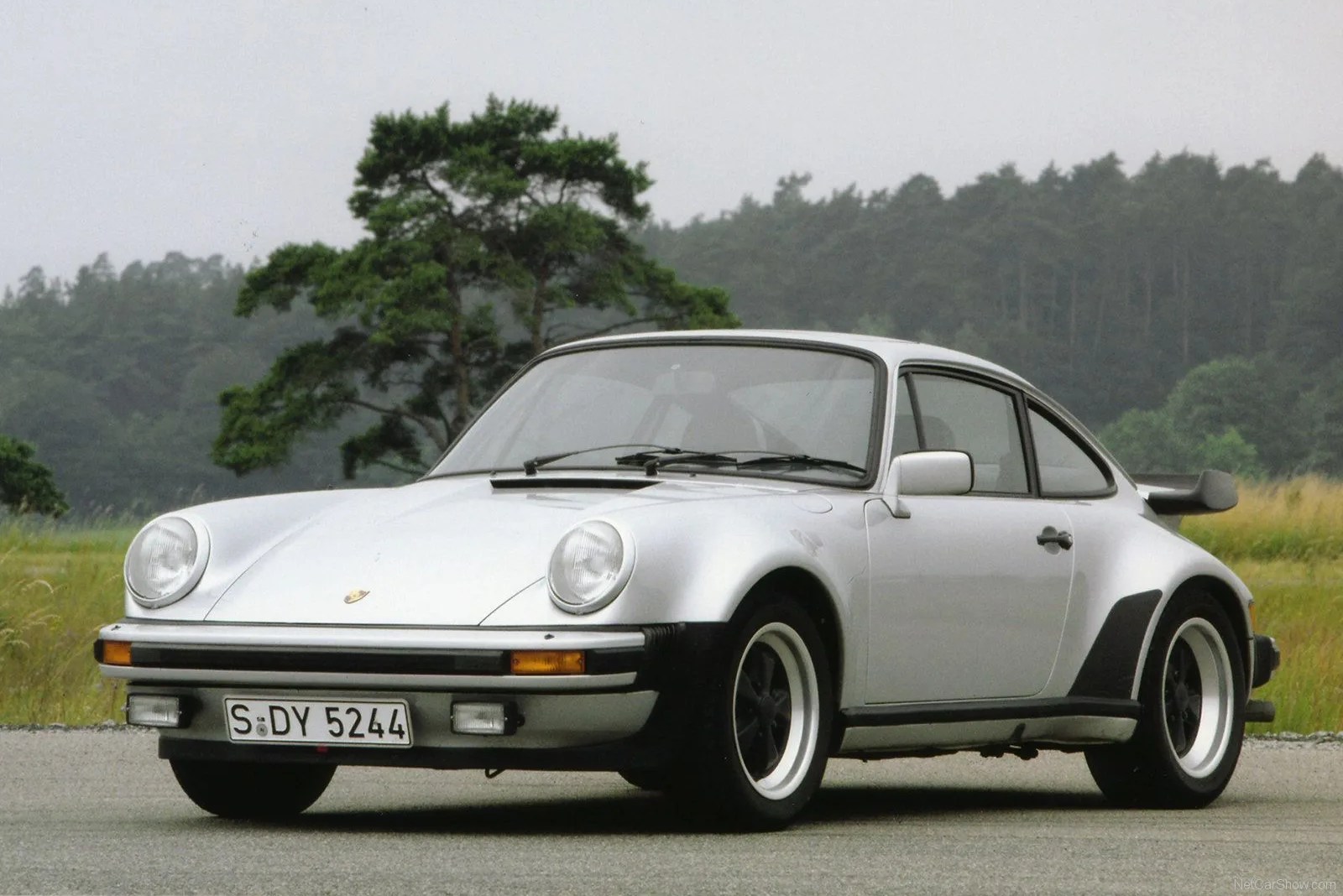
It’s hard to pick just one Porsche 911. But we’ll go with the 930, informally referred to as the Widowmaker, which was the first 911 Turbo. The production version emerged — as many great cars have — as a homologation requirement for it to go racing. The 930 had power. It had performance upgrades. And it had what became iconic 911 styling features such as the whale tail.
Original MSRP: $26,700
Ferrari 308 GTB/GTS (1975)

The 308 GTB challenged the Ferrari paradigm — being a mid-engine V8 instead of a V12 — and was so successful it became the paradigm. Aesthetically, it was a perfect blend of classic Ferrari looks with the trends at the time: It delivered legitimate performance. It was reliable. And Tom Selleck driving the Targa S version may have been as (if not more) important to the Ferrari’s bottom line than its racing lineage.
Original MSRP: $45,000
Honda Accord (1976)

The first Accord was a small hatchback, not dramatically better looking than cars like the Ford Pinto that came before. But its combination of reliability, practicality and surprising sportiness forever changed what a small car was supposed to be in America, and which brand you bought it from.
Original MSRP: $3,995
Jeep CJ-7 (1976)

The CJ-7 was the last Jeep CJ before the name changed to Wrangler. And it made that vehicle far more civilized, adding a longer wheelbase for better road stability and what were then-novel features, like a hardtop and full-sized steel doors.
Original MSRP: $4,299
Toyota Pickup 4×4 (1979)

We talk about how the Land Cruiser gets heralded often. But the progenitor of much of the Toyota truck mystique was the Toyota pickup, aka the Hilux. This generation set the tone with its utter indestructibility, while the truck line led to the Tacoma. And dabblings with a covered truck bed led to the 4Runner.
Original MSRP: $4,748
Mercedes Benz G-Class (1979)

Mercedes tried to build a utilitarian, military-grade body-on-frame, off-road vehicle. They ended up with one that spawned a ruggedly handsome, seriously capable civilian SUV that — defying all common sense — grew into the brand’s most desirable vehicle, and is now being launched as its own sub-brand.
Original MSRP: $26,325
The Best of the 1980s:

Mercedes-Benz W124 (1985)
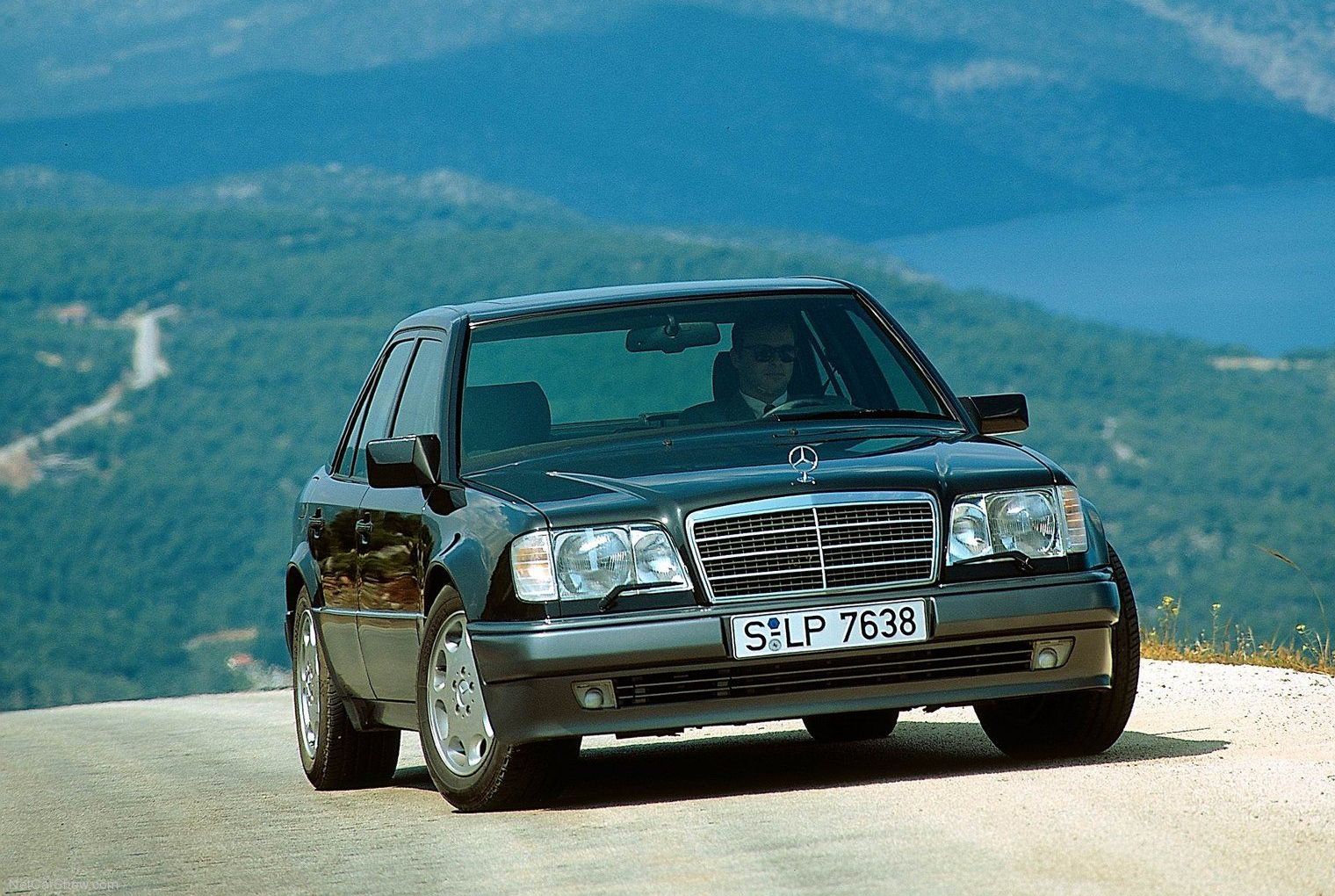
The 1980s were a glorious time at Mercedes. They made a handful of cars, and they could afford to pour effort into building the ultimate midsize car, the W124. It was a sedan, a couple, a convertible, a limo and a wagon. It served as the basis for the legends like the AMG Hammer and the Porsche-built 500E. It ran with everything from underpowered four-pots to a 6.0-liter V8. And it was utterly un-killable, almost literally: These cars — especially the diesels — will be on the road until the government comes to take them away.
Original MSRP: $32,190
Toyota FJ60 (1980)

The FJ60 represents the golden age of the Land Cruiser. It still kept the rugged, indestructibility, but it became more family-friendly, with features like legitimate rear seating that had access to heaters. And it hadn’t blown up in size yet to the uber-lux Land Crusher it became. How long do FJ60s last? The answer, after 40 years, is that we still haven’t figured that out yet — they’re still going.
Original MSRP: $12,478
Audi Quattro (1983)

Audi spells “quattro all-wheel-drive” with a stylized lowercase, out of deference to the Quattro car that made it and the Audi brand famous. The Quattro’s combination of phenomenal power and all-wheel drive grip revolutionized rallying — and the sports car itself. Pre-Quattro we had the AMC Eagle. Post-Quattro we got cars like the RS-6 Avant.
Original MSRP: $80,000
Chrysler Minivan (1984)

Chrysler set out to build a more powerful, safer and more practical version of the VW Bus and ended up revolutionizing the suburban family car and commenced the station wagon’s slow, agonizing death. Seating for 7, a low, flat load floor, and novel features like cupholders — seemingly every kid from the 1980s spent time in the back of one of these, enjoying these features.
Original MSRP: $8,280
Jeep Cherokee XJ (1984)

The XJ Cherokee made the SUV far more accessible, switching to a unibody architecture, shedding more than 1,000 pounds from the previous generation and providing halfway reasonable on-road driving dynamics. It (and its eventual imitators) paved the way for the SUV to be the modern default family car. And it was a rock-solid design that stayed in production — with slight updates — until 2001.
Original MSRP: $5,100
BMW E30 M3 (1986)

A homologation production special to let BMW race touring cars led to one of the greatest driver’s cars — and perhaps BMW’s best car — ever. A 5-speed manual and a naturally aspirated four-pot that delivered exceptional power for its weight set BMW down its path of producing sensible, work-going sedans that just happen to be able to kick ass.
Original MSRP: $34,495
Porsche 959 (1986)

Porsche’s vision of the future sports car was the 959. The future wasn’t a 6-speed manual geared to let the car pass noise tests. But with a small twin-turbocharged, water-cooled flat-six, all-wheel drive and an adjustable suspension, Porsche saw where the supercar — and the 911 Turbo — ended up going. Also, 3.6 seconds from 0-60 mph in 1986 was just absurd.
Original MSRP: $225,000
Ferrari F40 (1987)

The F40 was the last Ferrari that Enzo Ferrari commissioned to celebrate 40 years of Ferrari road cars. And it may be the best — and best sounding — of the bunch. The F40 was ferocious by the standards of the time — the first production car to hit 200 mph, allegedly. It also featured renowned quirks like having to lift up the entire front and rear body panels to access the frunk and the engine.
Original MSRP: $400,000
Mazda MX-5 Miata NA (1989)

The first MX-5 Miata proved Mazda’s point — you don’t need to spend a lot or put up with endless pains to have a fun, wantonly impractical sports car. Rear-wheel drive, manual transmission, supreme road feel, just that little bit of comfort to make the suspension tolerable: It’s a simple formula that keeps the car going strong 30-plus years later.
Original MSRP: $13,800
Lexus LS 400 (1989)

Toyota came after the luxury sedan-expert Germans with their first Lexus-branded vehicle, the LS400. They did not miss. The LS 400 raised the bar on refinement and quietness. It was more efficient. It beat its rivals on price. And it sacrificed none of its Toyota durability. It’s as cockroach-like as any Camry.
Original MSRP: $35,000
The Best of the 1990s:

McLaren F1 (1992)

McLaren gave famed F1 engineer Gordon Murray carte blanche to build his ultimate road car. The only compromise was that Honda wouldn’t build him an engine, so he had to go to BMW to get a 6.1-liter naturally-aspirated V12. The McLaren F1 had a full carbon fiber monocoque chassis. It sat three with the driver in a forward, central position. And it changed the game for supercars. Only 106 were built, not all of them road-going. One was trashed by Elon Musk.
Original MSRP: $815,000
Acura NSX (1990)

Honda decided to take on Ferrari with a high-performance sports car and did so — with a car that was still very much a Honda. The NSX was the first production car to drop a bunch of weight with an all-aluminum body, and it underwent painstaking chassis tuning with Honda F1 engineers and the legendary Ayrton Senna doing a more-than-trivial part of the testing.
Original MSRP: $62,000
Dodge Viper (1992)
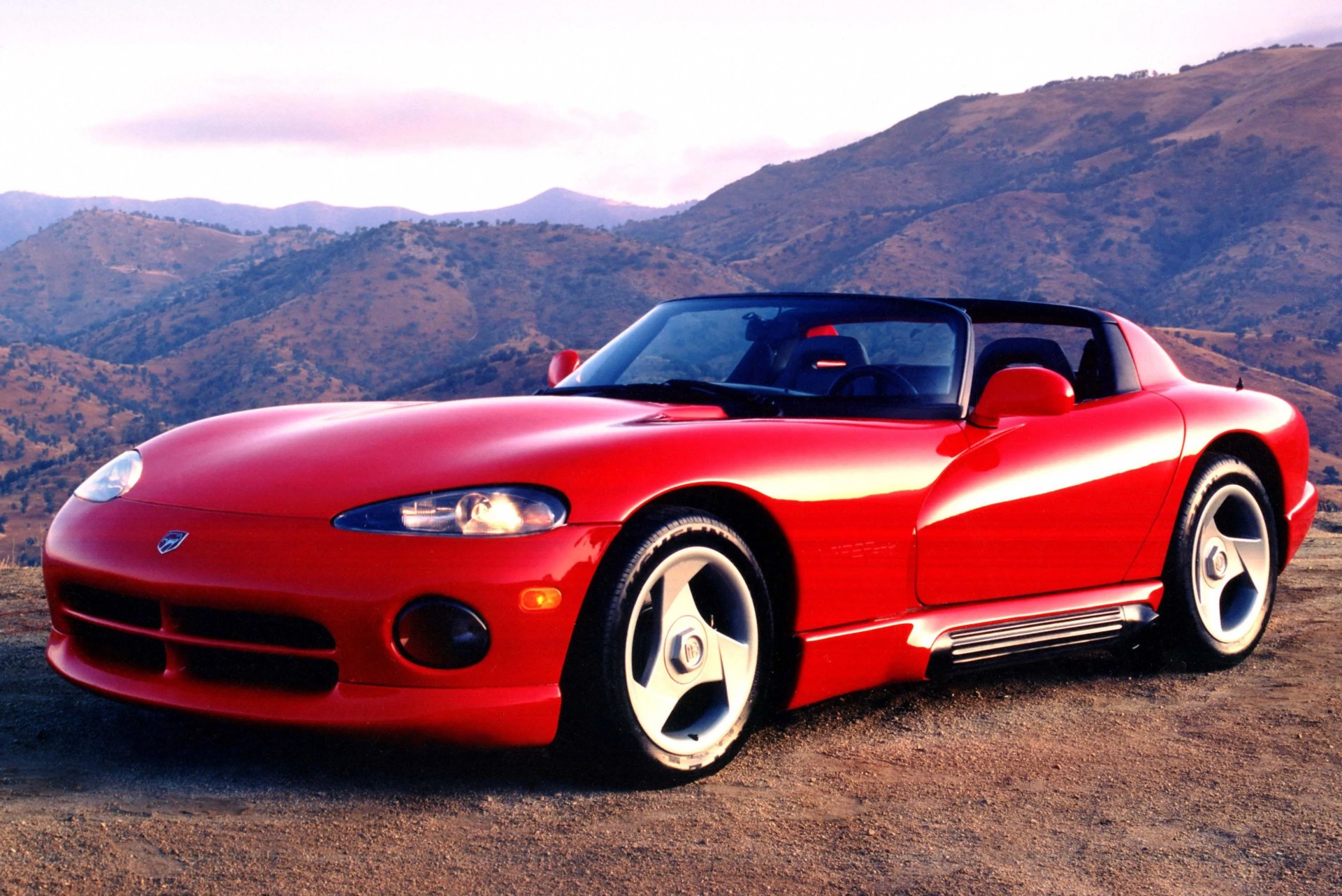
The Dodge Viper has always looked like the product of pure testosterone, and the original version was the purest. It had a bespoke 8-liter V10 engine with a six-speed manual. And it may be more infamous for what it didn’t have — glass windows, exterior door locks, airbags, air conditioning, traction control and antilock brakes.
Original MSRP: $52,000
Toyota Supra (1993)

The fourth generation was the last Toyota-built Supra — and the one the Fast and Furious franchise made famous. The stock Supra was formidable, eventually getting more than 300 horsepower and accelerating from 0-60 in 4.6 seconds. But the Supra is most famous as a tuner car. Modifiers quickly realized the legendary 2JZ-GTE engine and rock-solid componentry could accommodate multiples more power than Toyota was providing out of the factory.
Original MSRP: $33,900
Toyota RAV4 (1994)

Toyota had an idea. A wonderful and — to some — awful idea: They merged the visibility and four-wheel drive from an SUV with the size and fuel economy of a compact car. They gave it a quirky name. After a round of experimentation that included a convertible and an electric car, they stuck with the four-door, which became America’s best-selling and default car.
Original MSRP: $16,168
Subaru Outback (1995)

The Outback was a simple vehicle: Subaru took the all-wheel drive Legacy wagon, lifted it a bit and added some bigger tires. And they stumbled on the most practical all-around vehicle on the market. The Outback became an often-imitated, never-equaled sales dynamo that established the Subaru brand — now full of Outbacks of various sizes and shapes — and the adventure vehicle in the U.S.
Original MSRP: $20,805
Porsche 993 (1995)

The 993 generation is not the best-looking 911 generation, but it may be the most desired by enthusiasts. It was a brief four-year period where Porsche began incorporating more modern tech and adding more high-performance variants into the 911 lineup but, crucially, was still using the more classic Porsche air-cooled engines. Subsequent 911s converted to water-cooled.
Original MSRP: $67,200
Acura Integra Type R (1997)

Honda took an already solid Acura Integra compact, stripped it down for weight, strengthened the chassis, gave it more power and produced a limited number of what some — especially those paying bonkers prices at auction for them — consider the best front-wheel drive driver’s car ever made.
Original MSRP: $23,500
BMW X5 (1999)

Mercedes beat the X5 to market with the body-on-frame M-Class. But BMW cobbled together a unibody architecture, some Land Rover off-roading tech and BMW on-road performance into what was basically the first, modern, fully-formed luxury SUV.
Original MSRP: $49,400
Honda S2000 (1999)

If not the ultimate driver’s car, the Honda S2000 was the ultimate car enthusiasts would design. Naturally aspirated 2.0-liter VTEC. Manual Transmission. Rear-wheel drive. Stupidly high-revving. Incredible power-to-weight ratio. A car that thrived on the limit — perhaps to a fault given the super-low mileage counts of so many used ones.
Original MSRP: $34,995
The Best of the 2000s:
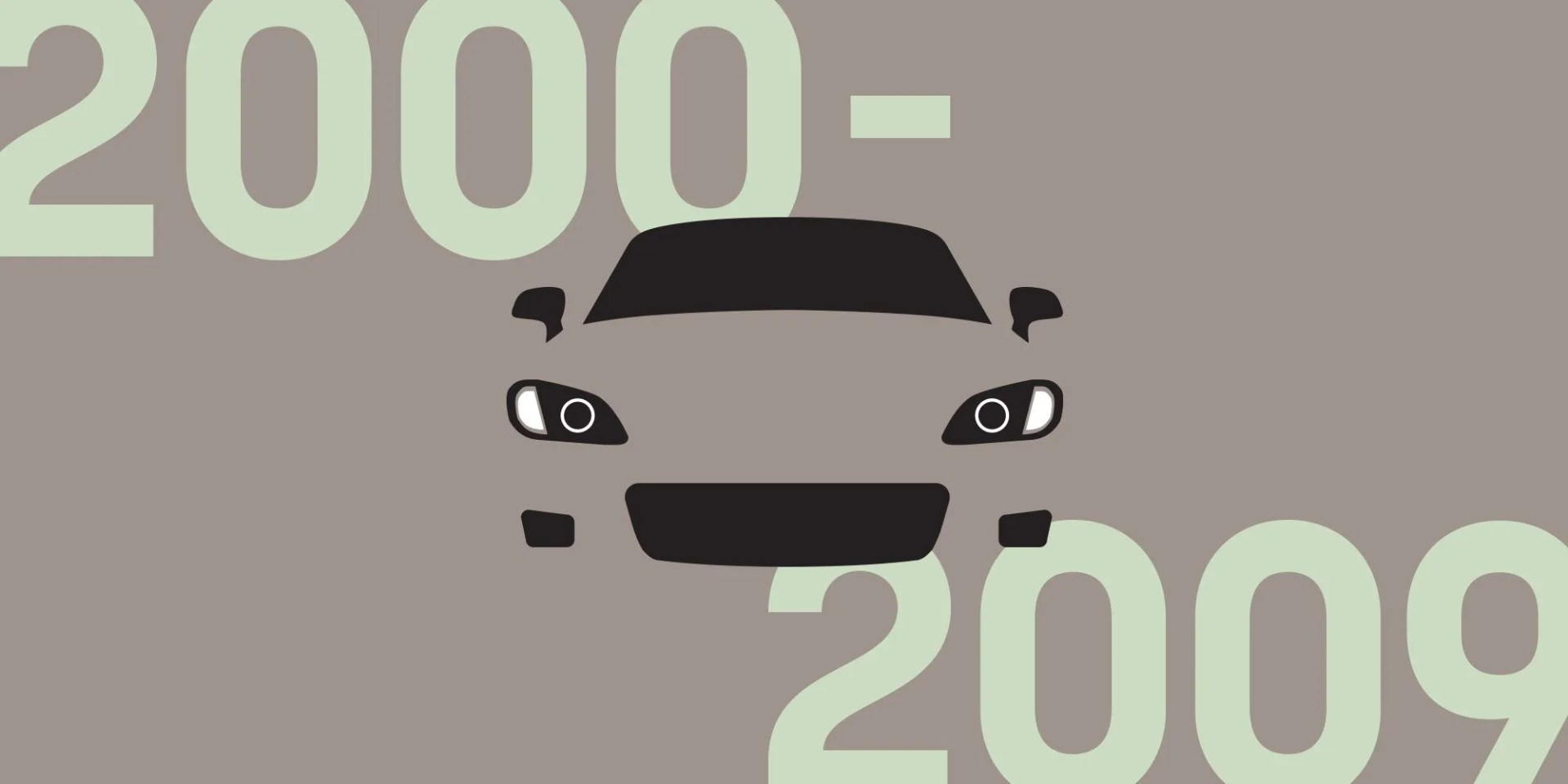
Porsche Cayman (2005)

Porsche gave the entry-level Boxster a coupe version, the Cayman, in 2005. With a rear mid-engine layout, it was lighter and had more optimal weight distribution than the 911, and stiffer than the Boxster. It also may have been the best handling car on the road — and there’s a reason Porsche didn’t give it more power to provide the 911 with genuine competition.
Original MSRP: $59,695
Ford F-150 Supercrew (2001)

Midway through the 10th generation F-Series — a comprehensive overhaul that made the truck more broadly appealing — Ford unveiled the Supercrew body style, a family-friendly, full-size truck with four full doors. That’s now the default pickup truck body style.
Original MSRP: $29,310
Cadillac Escalade (2002)

Cadillac has rebranded endlessly during the 21st century, but the Escalade has been the exception. While it debuted in 1999, the second-generation Escalade was when GM truly differentiated it from its Chevy and GMC corporate siblings, with tech and 20-inch rims to make it the definitive Cadillac of its segment.
Original MSRP: $48,735
Subaru WRX (2002)

Subaru finally gave in and brought the rally-inspired Impreza WRX to the U.S. in 2002. With bug eyes, blue paint and gold rims, the WRX was both a havoc-wreaking enthusiasts’ dream and a segment-redefining compact car, offering 227 hp and all-wheel drive at an affordable price.
Original MSRP: $23,995
Bentley Continental GT (2003)

The Continental GT was the first Bentley built under VW stewardship and a revelation that revived the brand. It was cheaper than past Bentleys, and it delivered staggering performance with a massive twin-turbo W12 powertrain. And, it was cool enough for Prince to own a Robin’s Egg Blue one.
Original MSRP: $149,000
Toyota Prius (2004)

The second-generation Prius hybrid — with its distinctive and dorky liftback body — transformed the discussion around fuel economy and made it fashionable. And with Toyota embracing both bold styling and hybrid power throughout its lineup — all models will have a hybrid option by 2025 — its impact is still being felt.
Original MSRP: $20,295
Ford Mustang S-197 (2005)

Ford revived and possibly saved the Mustang with the S-197 generation. With a retro-futuristic style, It was the best-looking Mustang since the first generation. And it rode on a new platform that allowed the Mustang to markedly ramp up its performance with later special editions.
Original MSRP: $19,215
Bugatti Veyron (2005)
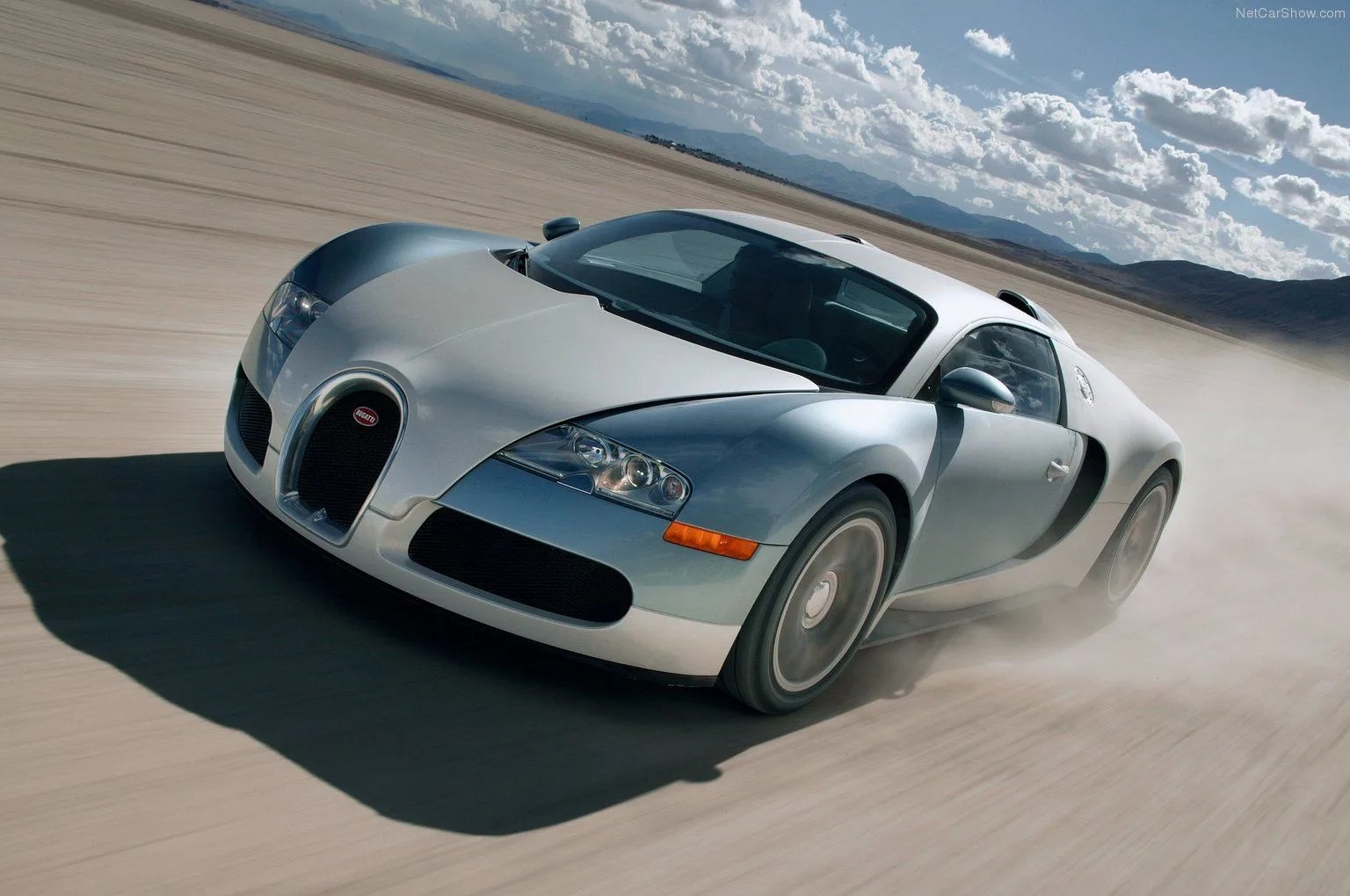
Bugatti invented the hypercar with the Veyron. With its 8.0-liter W16 engine with four turbochargers, the Veyron put out 1,001 horsepower, accelerated from 0-60 mph in less than three seconds, and reached a top speed of 253 mph. And that’s all without electrical assistance.
Original MSRP: $1,400,000
Ford GT (2005)

Ford beat Ferrari at Le Mans with the original GT40 race car. Forty years later, and just as improbably, Ford built a GT40 tribute, road-going supercar that competed with Ferraris again. The limited-run vehicle had 550 hp, 500 lb-ft of torque, a 6-speed manual, a $140,000 starting MSRP and an alarm system that famously drove Jeremy Clarkson batty.
Original MSRP: $140,000
Jeep Wrangler Unlimited JK (2007)

In 2007, Jeep made its boldest (and perhaps smartest) decision with the Wrangler, adding a four-door Unlimited model. It was an affront tradition, but it also expanded seating to five, added actual cargo space and converted a niche vehicle into a reasonably practical one most people could own. And it did it without sacrificing off-road capability. We don’t talk about the “Wrangler Unlimited” much anymore, because for about 90% of buyers, this is the Wrangler.
Original MSRP: $22,530
The Best of the 2010s and 2020s

Tesla Model S (2012)

Tesla’s Roadster got everyone’s attention. But it was the Model S that recast our perceptions of the electric car. Before the Model S, “electric car” equaled the dreary Nissan Leaf. But with sexy looks, ludicrous acceleration and enough range to function in everyday life, zero emissions became exciting and vibrant. Nearly ten years later, the Model S is still the EV gold standard — even if it can’t drive itself yet.
Original MSRP: $57,400
Ford F-150 Raptor (2010)
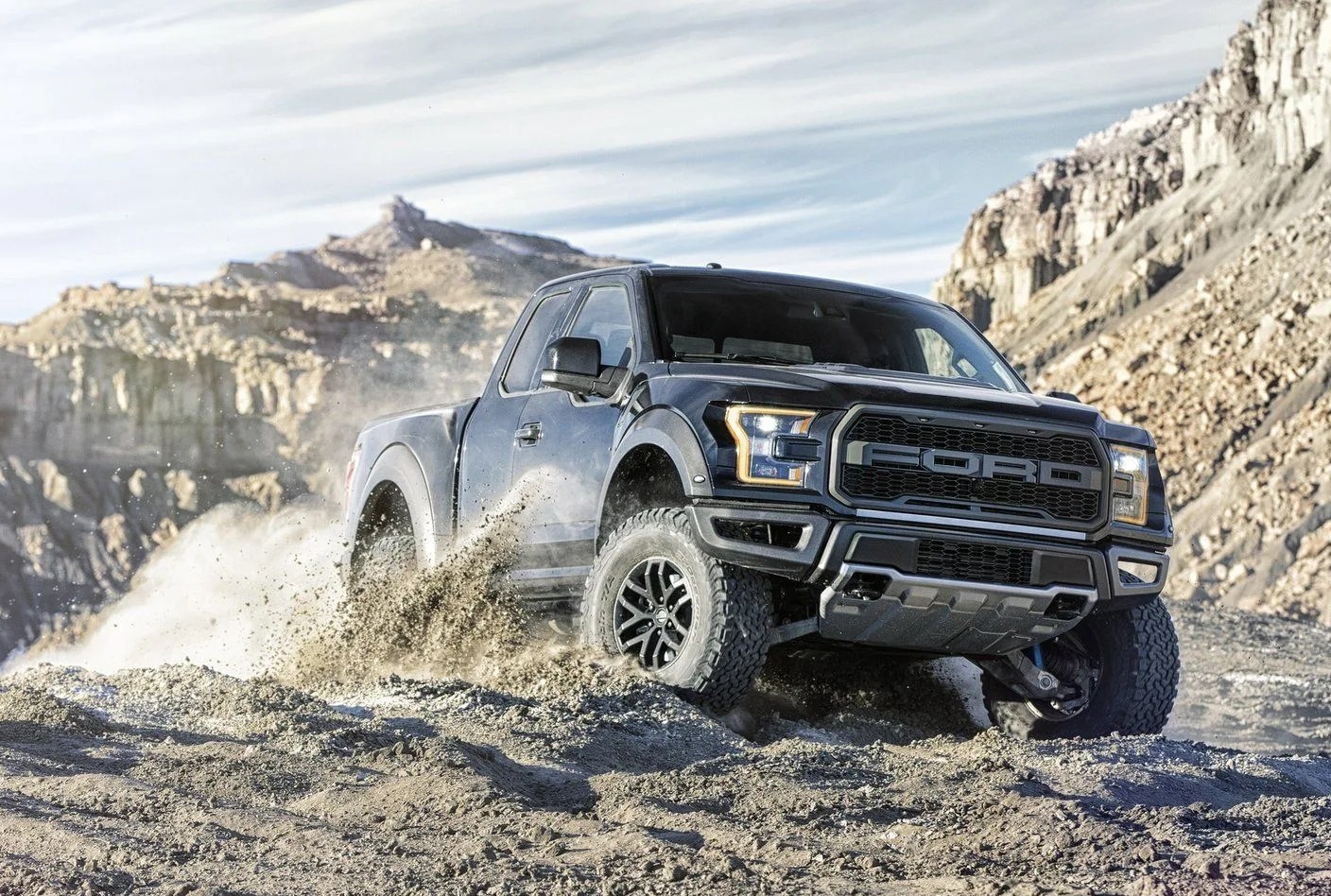 Courtesy
CourtesyStreet trucks never really caught on, but Ford took a different route. Super-powerful sports car? Incredibly capable Baja-ready off-roader? Badass-looking pickup? Refined on-road daily driver? Burly tow vehicle? With the F-150 Raptor, Ford delivered everything as part of the aspirational truck America did not know it needed.
Original MSRP: $38,995
Cadillac CTS-V Wagon (2011)

Cadillac has tried on many hats this century. The most fondly remembered of them will be the screeching performance one from the early 2010s. For four beautiful years, Cadillac sold its 556 horsepower V8, sports car-competitive flagship CTS-V as a station wagon…with a manual transmission.
Original MSRP: $64,340
Volkswagen Golf GTI Mk7 (2012)

The Golf GTI hatchback is legendary, and the Mk7 was the best version. It was perhaps the finest-handling daily driver on the market, at any price point. The Mk 7.5 version still held that unofficial title nine years later, and unlike the new Mk8 model, it started at less than $30,000.
Original MSRP: $24,595
Porsche 918 Spyder (2013)

The fastest hypercar in the world? It was the Porsche 918 Spyder, a plug-in hybrid. Porsche took a naturally aspirated V8 with more than 600 horsepower, added dual electric motors and produced a road-legal production car that could accelerate from 0-60 mph in 2.2 seconds. It took eight years for another manufacturer to beat that.
Original MSRP: $845,000
Ford F-150 (2015)

Ford did some daring, unthinkable things with the new 13th generation F-150 in 2015, switching to lighter weight aluminum-heavy construction and a lineup of mostly V6 powertrains. And it worked. These moves proved remarkably prescient and laid the groundwork to push the envelope further with hybrid and electric versions.
Original MSRP: $26,615
Alfa Romeo Giulia Quadrifoglio (2016)

Ferrari does not build four-door sedans, but the Alfa Romeo Giulia Quadrifoglio with its 505 horsepower Ferrari-derived V6 is as close to that prospect as we will ever get. With great looks, sublime handling and a raucous soundtrack, the Giulia Quadrifoglio is pretty much perfect. Alas, it also has had the trademark Alfa Romeo reliability record that will absolutely break owners’ hearts.
Original MSRP: $72,000
Chevy C8 Corvette (2020)

Chevy could have kept the Corvette rooted in the past. Instead, they pointed a bold new way forward with the new rear mid-engined, automatic transmission-only C8 generation that offers genuine supercar performance on a budget — and one supremely odd interior. Electrification that would once have felt unthinkable for the Corvette will now feel like a natural progression.
Original MSRP: $59,995
Ford Bronco (2021)

Ford set itself a high bar with the new Bronco. The new SUV directly challenged the Jeep Wrangler, a popular American icon at the top of its performance game with a rich brand heritage dating back to World War II. It put on a full court press of branding, building up enormous hype. And the Bronco lived up to it. It’s a viable competitor for the Wrangler on and off-road — and it may be the more compelling option.
Original MSRP: $28,500
Hyundai Ioniq 5 (2022)
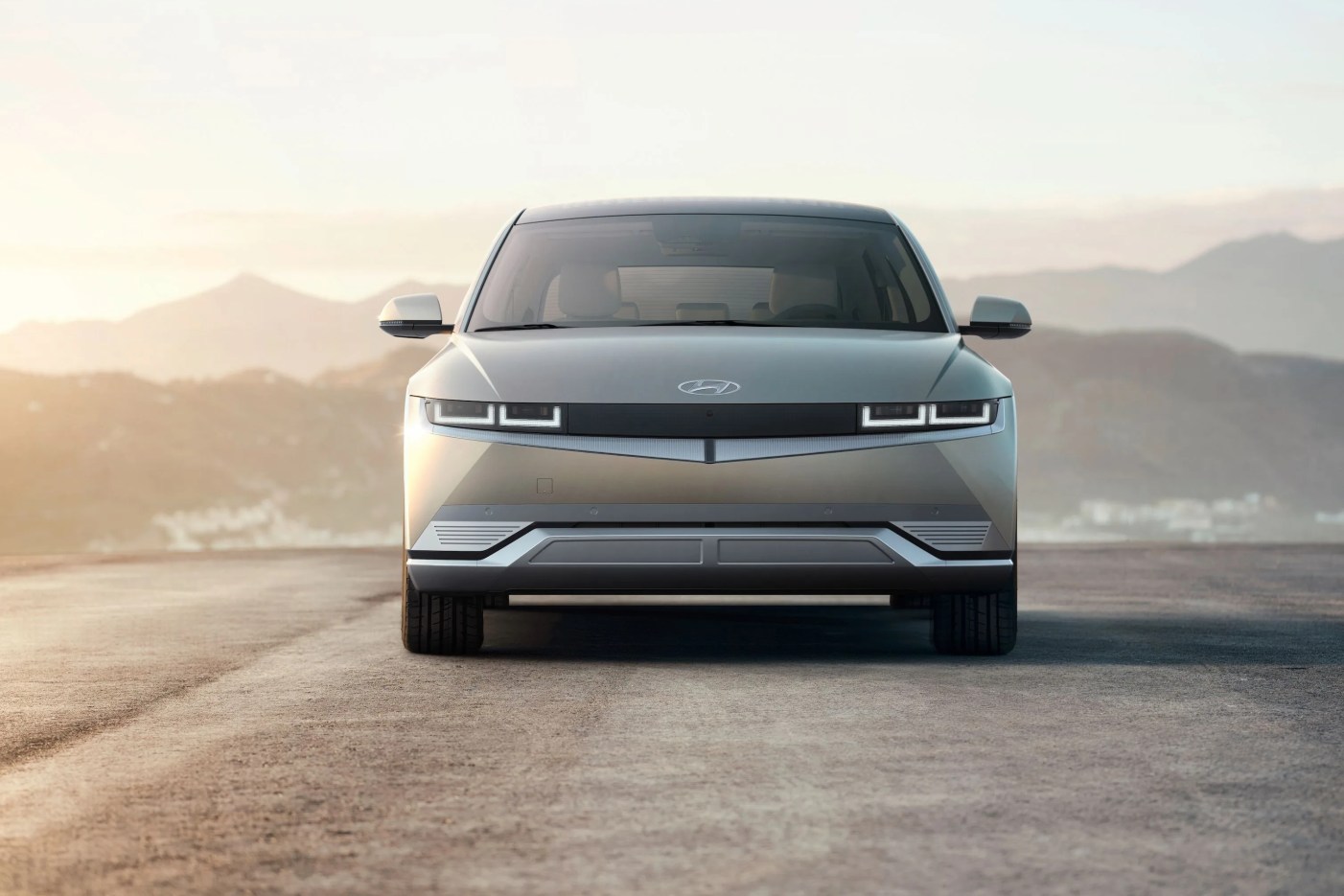 Hyundai
HyundaiCar enthusiasts have viewed the oncoming EV era with trepidation. How will cars distinguish themselves, have personality and rouse passion will being optimized for efficiency and not making any noise. The retro-futuristic Hyundai Ioniq 5 does all of the above by being a brilliant car, electric or not.
Original MSRP: $39,950
Future Cars We’re Excited About:
 Toyota
Toyota- 2024 Jeep Recon
- 2024 Toyota 4Runner
- 2025 Toyota Electric Pickup
- 2025 Ford Electric F-Series
- 2027 Porsche 3-Row SUV
